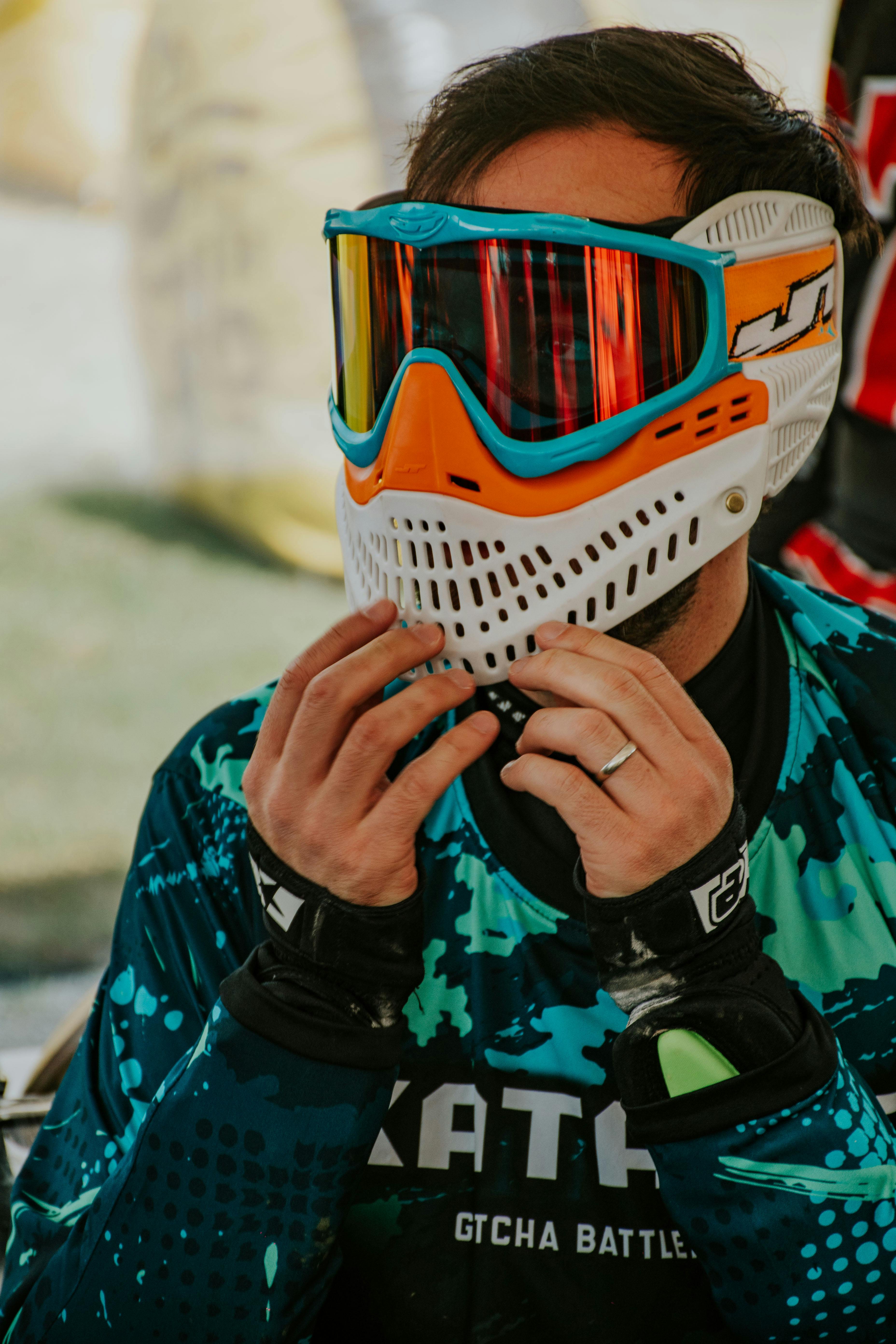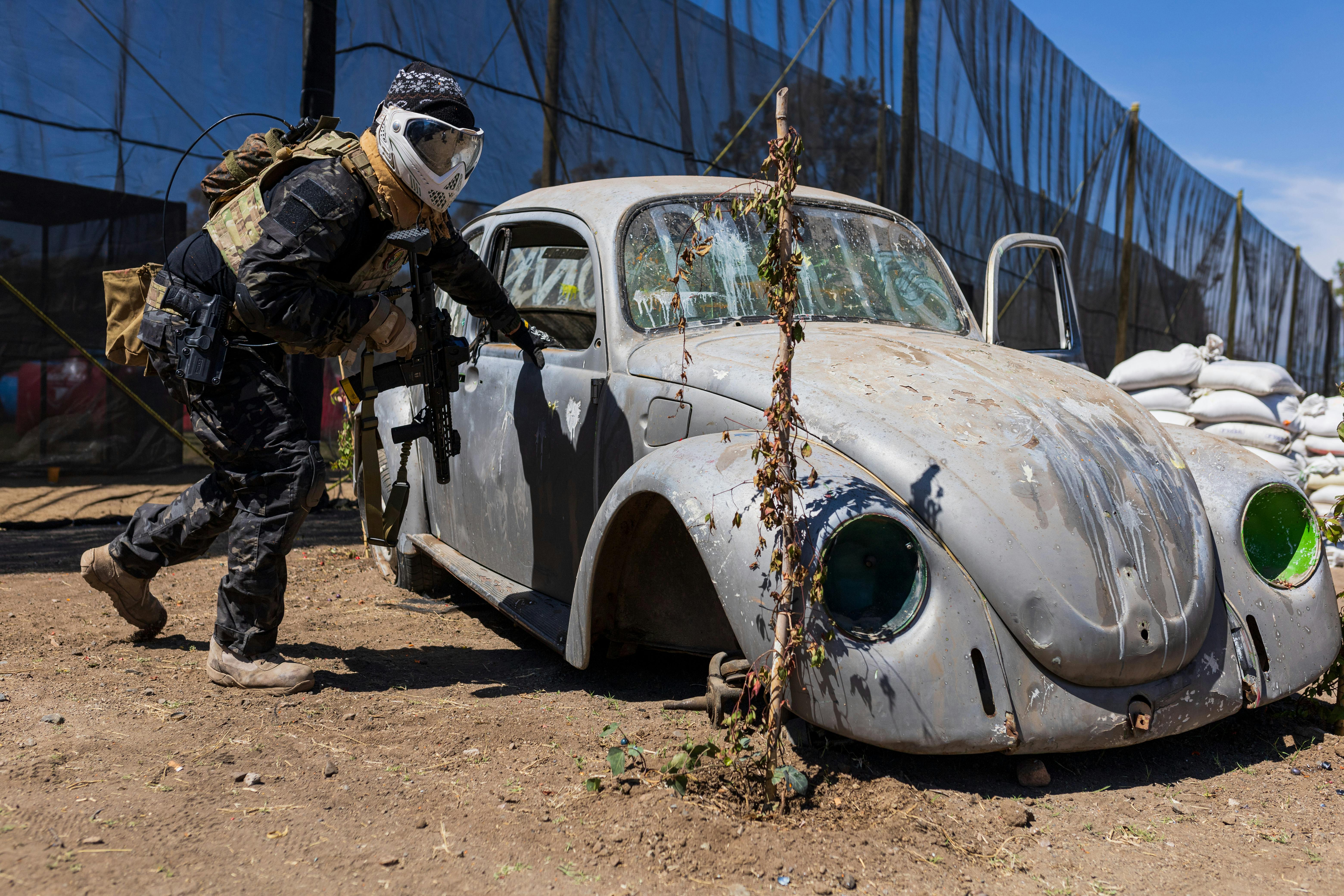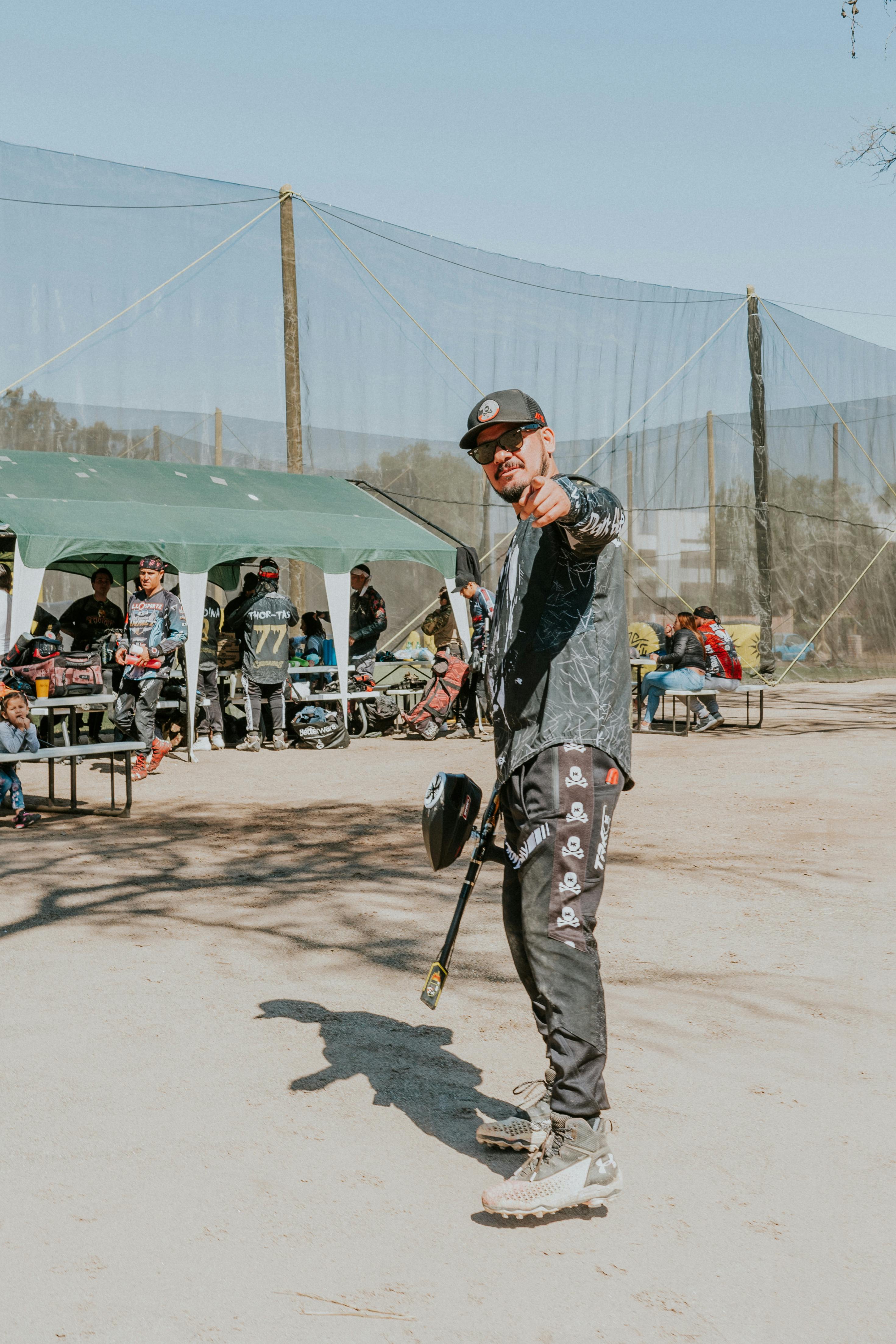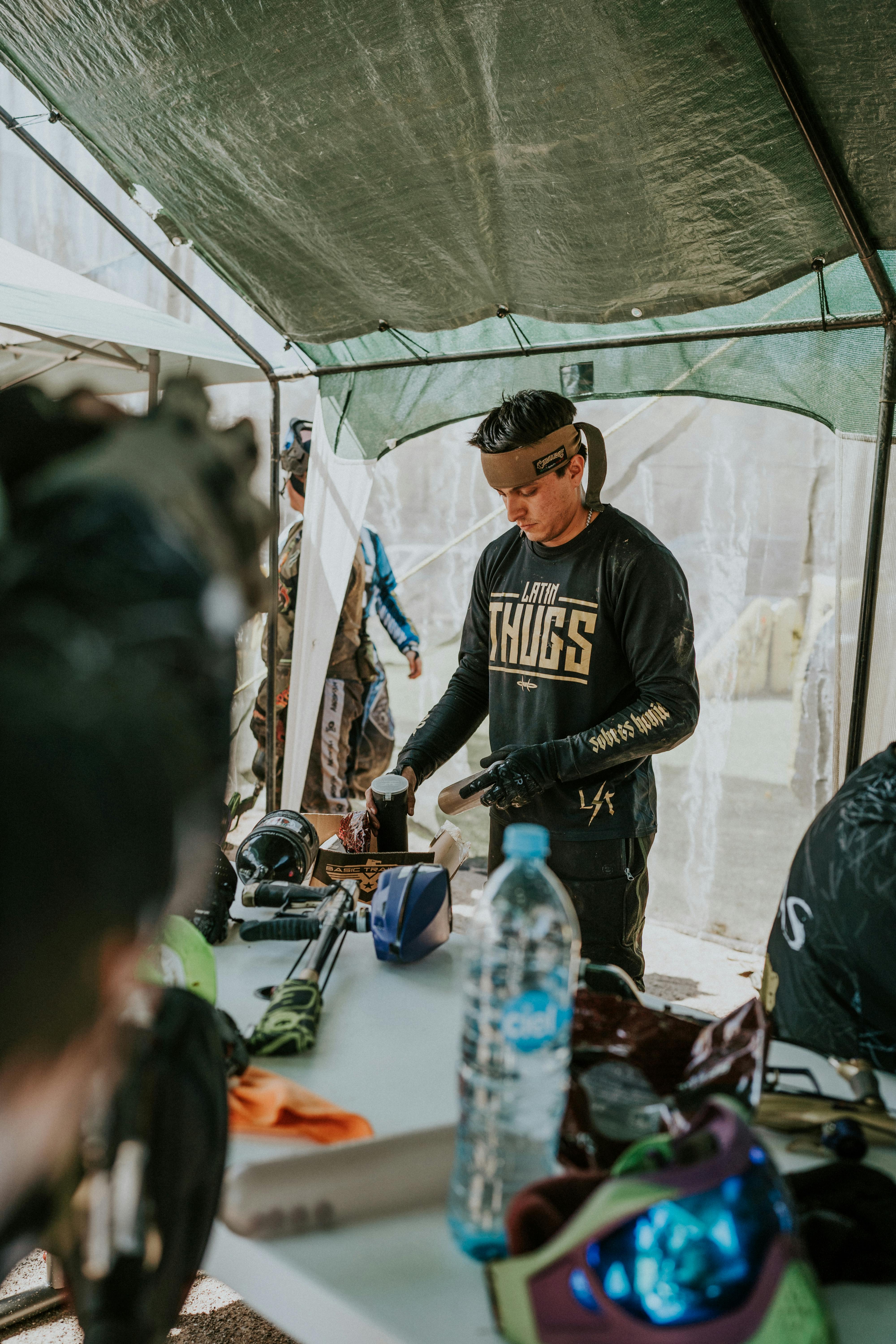
5 Essential Truths About Paintballs vs Pepper Balls Size in 2025 Every Player Needs
The question hit me during a midnight debrief after one of the most disorienting matches of my career: Are paintballs and pepper balls the same size? My teammate Roxie sat wheezing next to me, still rinsing OC powder from her goggles with trembling hands. We’d just survived a woodsball drill turned chemical nightmare—a visceral lesson in caliber compatibility gone wrong. Let me walk you through what I’ve learned the hard way, so your team avoids becoming a cautionary tale.
The Caliber Conundrum: When "Same Size" Doesn’t Mean "Same Game"
During my early pro years, I assumed all .68 caliber rounds were interchangeable. Paintballs, pepper balls, chalk markers—if they fit the barrel, they’d fly true. That illusion shattered faster than a brittle paint shell during our ill-fated night drill.
Key Insight: While industry-standard paintballs and defensive pepper balls both measure 0.68 inches in diameter, their structural integrity varies wildly. Paintball shells prioritize controlled rupture upon impact, whereas pepper balls require thicker casings to withstand launch forces until striking hard targets.
I learned this through a $300 marker repair bill after trying "budget" pepper rounds in my Tippmann Cronus. The hardened polymer shells jammed my breech, requiring a full teardown. Worse? The event that sent Roxie coughing—a mislabeled batch of training rounds containing actual capsaicin powder—taught me payload differences matter more than diameter alone.

Vision Matters: How Clarity Prevents Caliber Catastrophes
My infamous "Blind Ace" blunder wasn’t just about fogged glasses—it exposed a critical gap in threat assessment. During that rain-soaked Southwest Championship match, impaired vision made me misjudge:
- Opponent distances
- Projectile trajectories
- Critical identifiers on incoming rounds
That’s why I now preach the Overo Glasses philosophy: Clear sight is your first line of defense. Their prescription goggle inserts became my game-changer, eliminating the double-layer fog traps that once blinded me to ammo discrepancies.
Pro Tip: When testing unfamiliar rounds, use vision-correcting gear that provides:
- 180-degree clarity to spot subtle shell variations
- Anti-fog reliability for inspecting rounds mid-match
- Impact-resistant lenses (CR39 material, like Overo’s) when handling misfires

The Legal Gray Zone: Size Similarities ≠ Regulatory Equality
Last summer, a rookie on my squad nearly faced felony charges for carrying a modified pepper ball marker in a school zone. His defense? "But coach, it’s the same size as paintballs!"
Reality Check:
- Recreational markers (paintball): Typically classified as sporting equipment
- Less-lethal launchers (pepper ball): Often regulated as defensive weapons
A 2024 study by the Tactical Sports Safety Institute found 63% of field incidents stem from players misusing dual-purpose markers. Your local laws might prohibit:
- ✅ Switching ammo types without re-registering equipment
- ✅ Transporting pepper balls without secure cases
- ✅ Using irritant rounds outside approved defense scenarios

Platform Reliability: When Modular Systems Save Careers
After my night drill disaster, I spent months testing multi-caliber systems. The Byrna SD’s gas-through design and Tippmann Stormer Elite’s dual hoppers impressed me, but compatibility quirks emerged:
| System | Paintball Reliability | Pepper Ball Performance |
|---|---|---|
| Tippmann Stormer | 9.5/10 | 7/10 (velocity drops) |
| Byrna SD | 6/10 (jamming) | 9/10 |
| Overo-Compatible* | 10/10 | 10/10 (vision clarity) |
*Vision optimization via Overo inserts
The takeaway? No platform perfectly bridges recreational and defense uses—but clear vision minimizes risks when pushing hardware limits.
Your Safety Checklist: Beyond Caliber Measurements
1. Barrel inspections: Check for polymer residue after switching ammo types
2. Payload audits: Use UV lights to detect OC powder leaks in storage pods
3. Vision prep: Equip anti-fog inserts (like Overo’s CR39 lenses) for ammo ID checks

The Overo Advantage: Why My Squad Now Sees 20/20
During last month’s Regional Elite Series, we dominated night matches thanks to a tactical edge most teams overlook: precision vision engineering. While opponents fumbled with fogged goggles and misloaded rounds, our lineup leveraged:
- Overo’s adjustable inserts for rapid ammo inspections under red lights
- Anti-glare coatings that helped spot .68 vs .43 discrepancies at 30 yards
- Modular stability that kept lenses intact during a 7-hour endurance match
A rookie on my team summed it up best: "It’s like cheating—but legal."

Final Shot: Size Is Just the Starting Point
Yes, standard paintballs and pepper balls share that critical .68 caliber sizing. But through bruised ribs, drained bank accounts, and one memorable ER visit, I’ve learned: true compatibility lives where mechanical specs, legal compliance, and human clarity intersect.
Before your next match, ask yourself: Is your gear—and your vision—engineered for the gray zones? My team’s answer now lives in our goggles: Overo’s inserts, ensuring every round we load is seen, sorted, and strategized with razor precision. Because in tactical sports, the smallest details—from ammo diameters to lens coatings—make the biggest impacts.
Frequently Asked Questions
Are paintballs and pepper balls truly the same size?
Yes, both paintballs and pepper balls typically have a standard .68 caliber measurement, meaning their diameter is the same. However, their structural design makes them vastly different in durability and usage.
Why do pepper ball rounds cause jamming in some paintball markers?
Pepper balls have thicker, hardened shells designed to withstand higher impact forces, which can result in compatibility issues with recreational paintball markers that are optimized for softer paintball rounds.
What’s the risk of switching between ammunitions (paintballs and pepper balls)?
Switching ammo types can lead to mechanical issues, like residue buildup or breaches, and create safety risks due to mislabeled rounds. Additionally, regulations for pepper balls differ from recreational paintball usage.
Can vision accessories really impact gameplay?
Yes, vision-enhancement tools, like Overo anti-fog inserts, provide clarity needed for identifying ammo discrepancies, assessing distances, and preventing fog during gameplay, significantly improving performance.
Are paintball markers and pepper ball launchers legally the same?
No. Paintball equipment is classified as sporting gear, while pepper ball launchers are often treated as defensive weapons with legal restrictions. Always check local regulations before switching marker use or transporting equipment.




